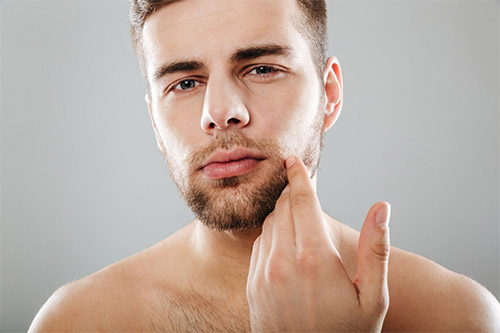The Male Facelift Procedure
At Linia, facelift surgery is generally performed under local anesthetic with or without sedation, depending on the treatment. General anesthetic can also sometimes be used.
Our Surgeons who perform face lift surgery under local anesthetic state that there is minimal distortion due to there being no anesthetic tube and they can make the face move as they want, therefore they believe that this way they can often achieve better results.
Generally, depending on the procedure, incisions are made in the existing skin creases and hair bearing regions surrounding the ear.
The skin is lifted as a flap. The loose fat is re-draped or removed and the muscles tightened and lifted.
Then excess skin is removed and stitched to create a smoother, more refined contour for your neck and jawline.
Self-dissolving sutures are used. You will find that this gets rid of loose skin and problem lines and wrinkles with the overall effect of giving the face and neck a much softer, refreshed and younger look.
Here’s a more detailed look at the different types of facelift surgery:
What will happen after the Facelift operation?
Following your facelift surgery, your surgeon will see you when you have recovered to check that all is well. You’ll be given medication and post-operative instructions and will wear a small bandage over the incision site for 1-2 days. You will also be given appropriate telephone numbers in case you need to contact us at any time.
Week 1-2
Most of our facelift patients resume normal activities within 7 days. It depends on the individual. You will also receive a check-up 7-10 days after your surgery. Most of our surgeons use dissolving stitches. The puffiness and bruising usually clears up in 2 weeks and normal make-up may then be applied.
Weeks 8-10
Your surgeon will see you again, usually 8-10 weeks after the facelift surgery for a full post-operative consultation.
What is the recovery time of a Facelift?
Regardless of what type of facelift you have, it is likely you will have to spend at least one or even two nights in hospital.
Following completion of the procedure, your head and face will be wrapped in bandages for support and you may have to wear those for several days afterwards.
Initially, after the procedure, it’s normal for your face to feel bruised, swollen and sore.
You will be prescribed painkillers to relieve you of this pain and discomfort. In time, the bruising and pain will reduce.
Your surgeon will discuss recovery with you in greater detail, based on the extent of the work you have had done, as well as arranging a follow-up appointment.
Don’t worry if you have any issues or concerns while you are recovering at home, as someone from the team here at Linia will always be available to help you.
You should expect to need 2 weeks off after your facelift surgery.
However, it may be necessary to take 3 weeks off if you also received blepharoplasty surgery.
Regardless of the type of facelift or how extensive the procedure was, you should avoid any form of strenuous exercise or activity for at least 8 weeks.
Although it is not always the case, it may take up to 12 weeks to fully recovery from the bruising, when you will be able to see the benefits and results of the facelift.
As with any surgery, facelifts for men in all their forms are tailored to your individual needs.
Therefore, in order to find out how long the process will take, how long recovery will take and anything else you need to know, we’re more than happy to book you a free consultation with one of our surgeons today.
Which Types of Facelifts Are Available For Men?
You’ll have a similar selection of facelift procedures available to you as women, including:
- S Lift
- Mini Facelift
- Lower Facelift
- SMAS (Deep Plane Lift)
- MACS (Minimal Access Cranial Suspension)
We discuss each type of facelift surgery further down.
Who are facelifts suitable for?
The Face Lift surgery is suitable for anyone that has one or more of the following:
- Jowls or loss of a well-defined jawline
- Deep wrinkles in the cheeks and sagging around the cheekbones
- Significant sagging of muscles
- Loose skin, wrinkles, vertical ‘cords’ or excess fatty tissue in the neck
Does the facelift procedure hurt?
Not at all, the procedure itself is performed under a General Anaesthetic so there is absolutely no pain.




























